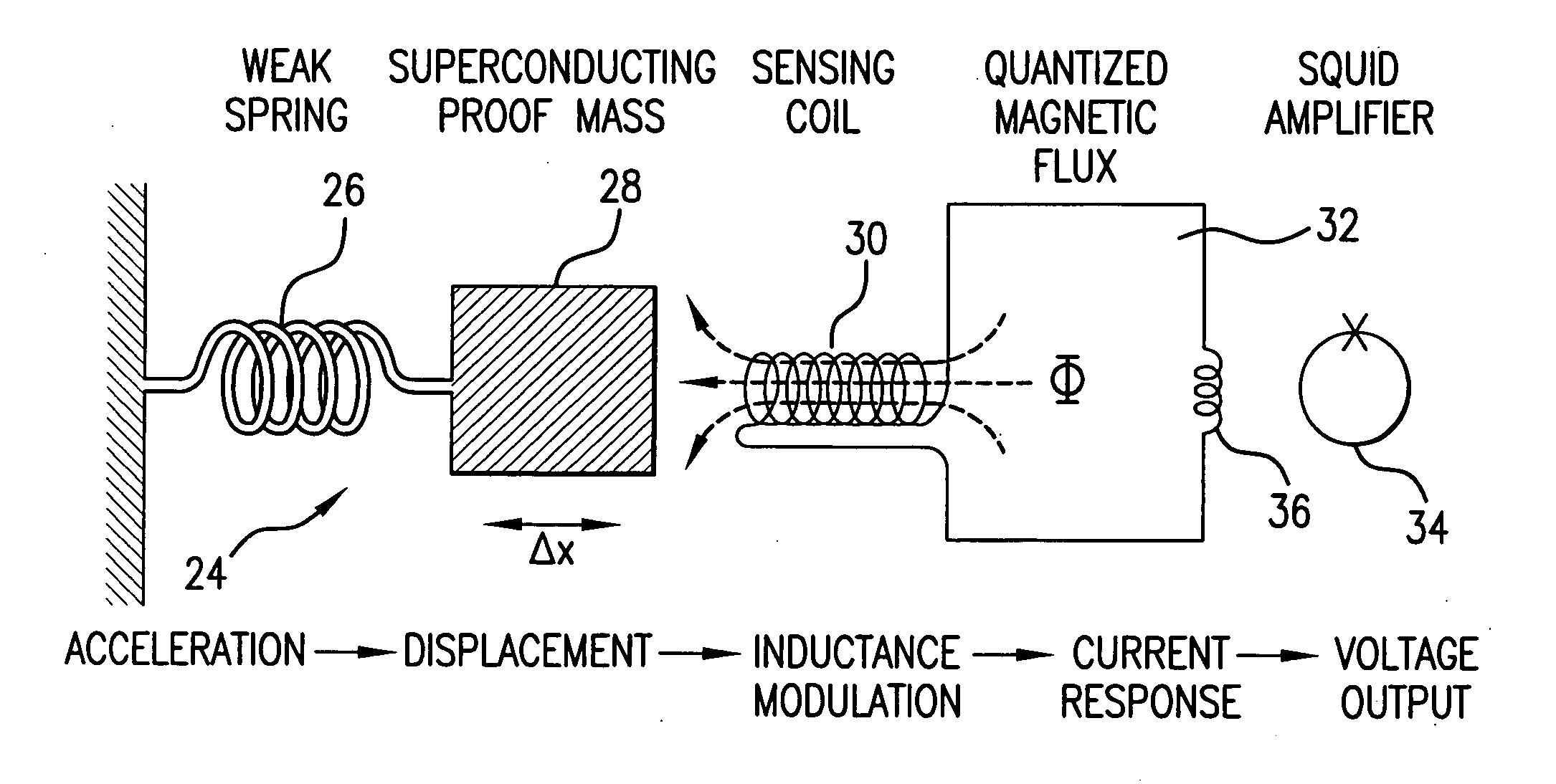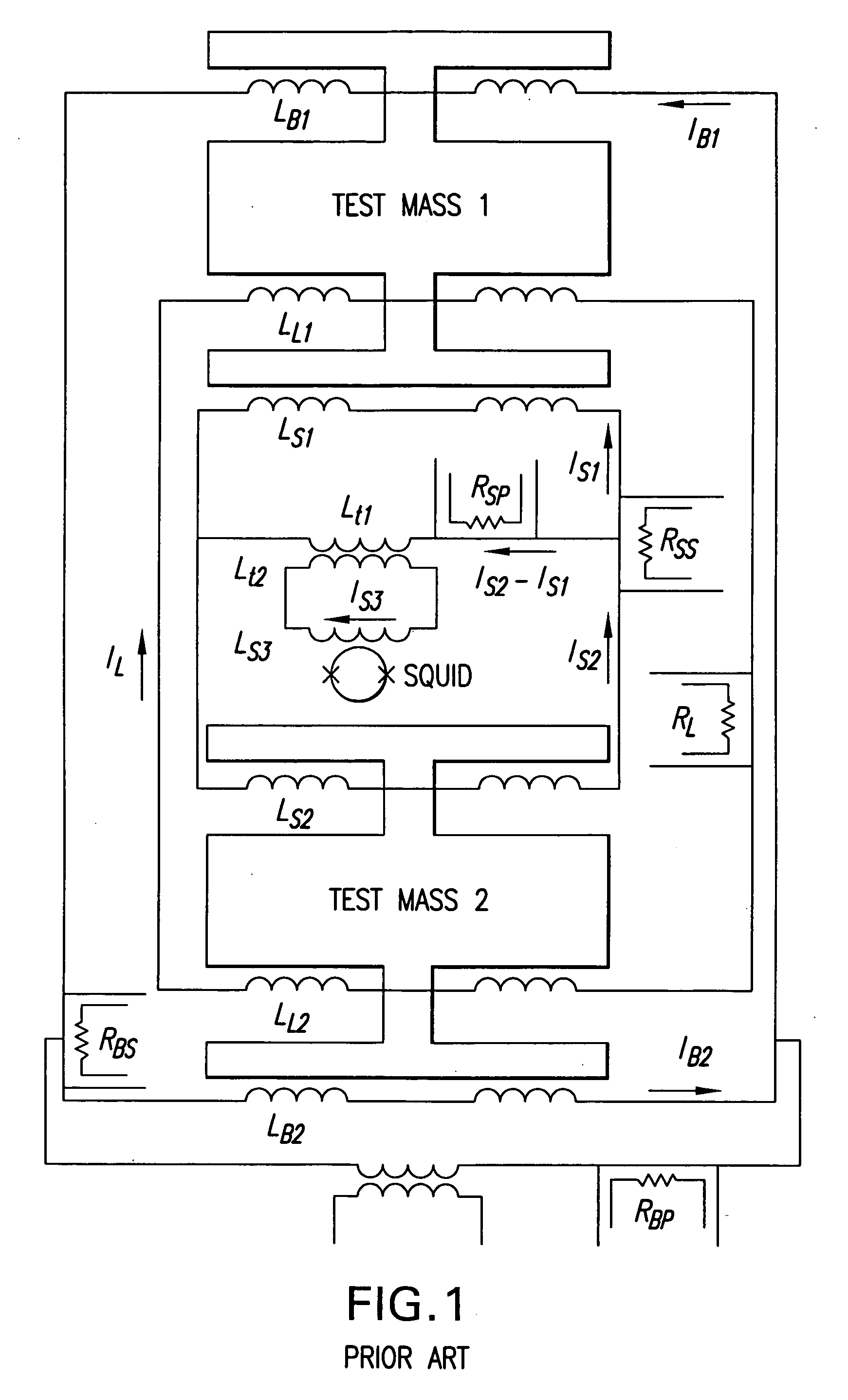Cross-component superconducting gravity gradiometer with improved linearity and sensitivity and method for gravity gradient sensing
a gravity gradient and superconducting technology, applied in the field of sensing, can solve the problems of inability to control translational acceleration, significant error in autonomous navigation, and hostile platform environment of aircraft, ships or land vehicles, and achieve the effect of improving the linearity of instruments
- Summary
- Abstract
- Description
- Claims
- Application Information
AI Technical Summary
Benefits of technology
Problems solved by technology
Method used
Image
Examples
Embodiment Construction
[0075] The cross-component superconducting gravity gradiometer 10 of the present invention is designed based on the following principles of gravity gradiometry:
[0076] Gravity may be described by an unobservable potential φ(xi,t). Its first spatial derivatives form a field vector: gi≡−∂φ∂xi. This gravitational field is indistinguishable from platform acceleration by the Equivalence Principle. The intrinsic field that uniquely characterizes the gravity field is the “gravity gradient” tensor:
Γij≡∂2φ / ∂xi∂xj. (Eq. 1)
The gravity-gradient tensor is symmetric. Its trace is relative to the local mass density by Poisson's equation, an expression of the inverse-square law:
Γii=∇2φ=4πGρ (Eq. 2)
In free space (ρ=0), this trace vanishes. This leaves only five independent components for Γij: two diagonal (“in-line”) and three off-diagonal (“cross”) components.
[0077] In an in-line component gradiometer, the differencing of the signals is used between two linear accelerometers whose sensitiv...
PUM
 Login to View More
Login to View More Abstract
Description
Claims
Application Information
 Login to View More
Login to View More - R&D
- Intellectual Property
- Life Sciences
- Materials
- Tech Scout
- Unparalleled Data Quality
- Higher Quality Content
- 60% Fewer Hallucinations
Browse by: Latest US Patents, China's latest patents, Technical Efficacy Thesaurus, Application Domain, Technology Topic, Popular Technical Reports.
© 2025 PatSnap. All rights reserved.Legal|Privacy policy|Modern Slavery Act Transparency Statement|Sitemap|About US| Contact US: help@patsnap.com



